
 |
|
|
|
#1
|
||||
|
||||
|
Some more examples of terrain that creates dirty air along with clear zones. In some of the following cases the upwind obstructions are fairly low. As such, the normal issue with close to side shore winds flowing over these lower barriers is avoiding kites stalling, falling like rocks and risking wrapping other kites, cutting people with line. In these cases getting your kite up, over the water and getting out promptly is indicated. As a rule, going in side off winds in these areas isn't feasible. You might get offshore with some effort but the lulls nearshore (within a 1/2 mile or so) will usually see your kite on the water and you swimming your stuff back to shore.
In areas with large upwind obstructions, tall buildings, hills, mountains, etc. particularly with strong and direction shifting winds the hazards of kiting in rotor go up substantially and feasibility of kiting drops (vanishes?) dramatically. Depending on local conditions the wind shifts in the "some rotor" area may still be too excessive at times. 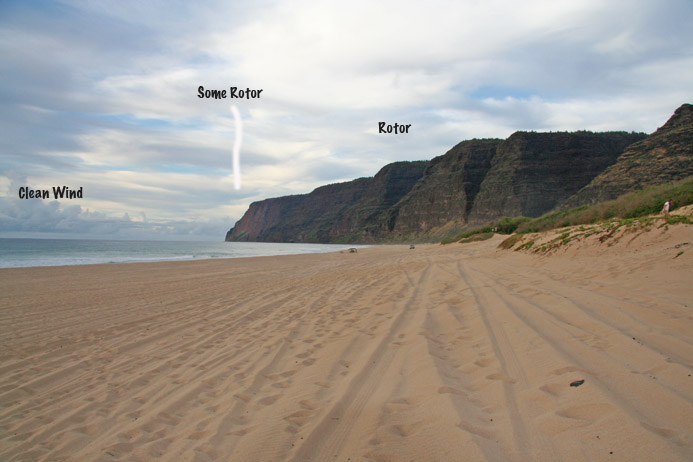 The larger the obstruction and the stronger the winds, the more erratic and potentially hazardous the rotor induced lulls and gusts. In this case given the size of the obstruction, it might be more fair to call "some rotor," "lots of rotor." 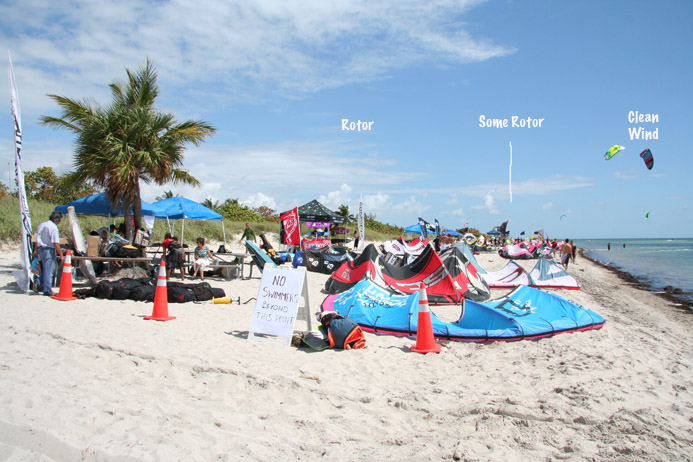 Here is an example of a low obstruction. It can still easily mess up prospects for staying upwind or easily returning to shore if side off. The quality of wind when it is side shore is lessened as well. 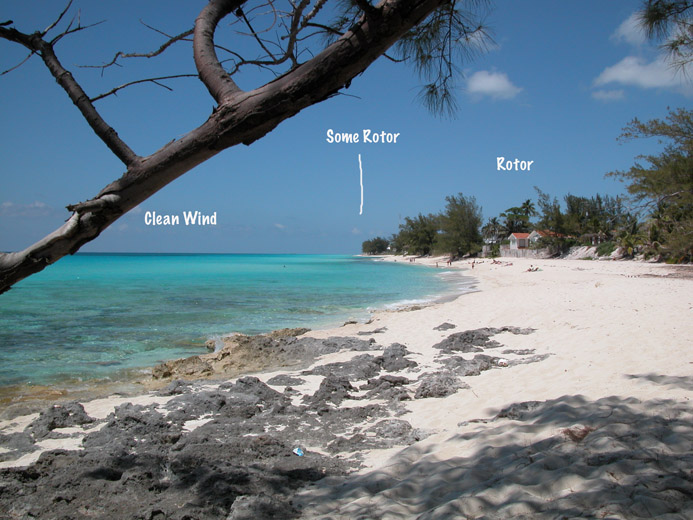 Islands often have irregular shorelines, frequent wind obstructing headlands. Changing launch locations can make a big difference in the quality of wind on islands. As compared to some parts of Florida where you might travel 50 miles with no significant change in wind direction relative to shore. 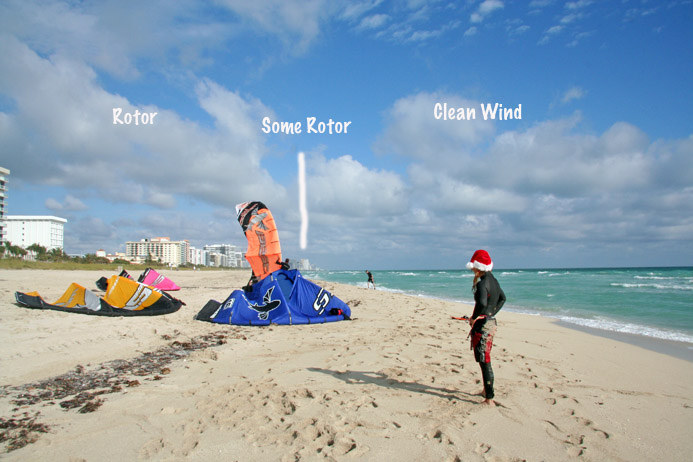 SE Florida mountains, aka condos. Where you have them there's wind shadow and eddies spinning off the sides downwind. Where there are holes, you can get stronger wind but still uneven, perhaps dramatically so. Where they are bunched together you may have no useable wind. Again, side off in this area generally doesn't work, at least not without a chase boat and a few miles from shore. When it is close to sideshore and shifting over barriers near the water, kite launch, landing and riding can be challenging and even dangerous. 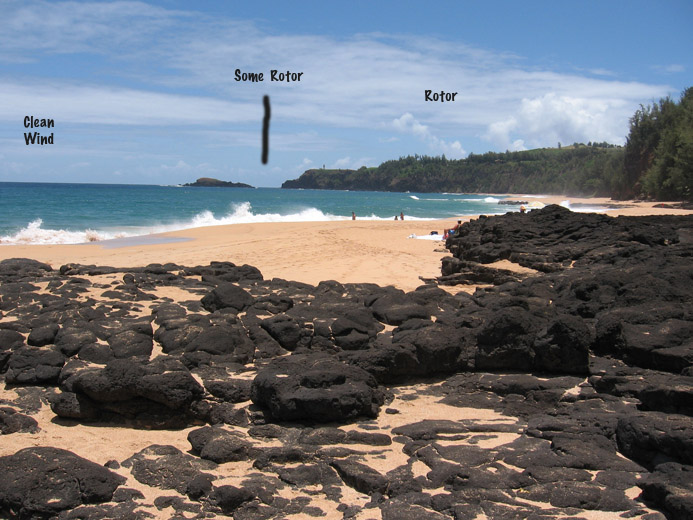 The "some rotor" zone is wide in the case due to the island and notch present to windward. The wind direction can shift quite a lot due to eddy effects around these objects. With the shifting the wind can gust and lull substantially making staying upwind, launching and landing tricky and again potentially dangerous. If you are new to kiting, to the area or are just back from being away from the sport for a while, avoiding "some rotor" and definitely "rotor" conditions makes good sense, even more so in stronger winds. There have been too many avoidable injuries related to these causes.
__________________
FKA, Inc. transcribed by: Rick Iossi |
|
#2
|
||||
|
||||
|
Quote:
That is the beach at Guincho, it is less than 2.5 miles (about 4 km) from that point of land, Cabo de Rocha. Cabo seems to rise a good distance above the water. The area is known for a strong wind, the Nortada. I understand it comes out of the N-NW augmented by thermals from the arid hot shore areas rising to around 25 kts. (perhaps as high as 40 kts.?, not sure about this). 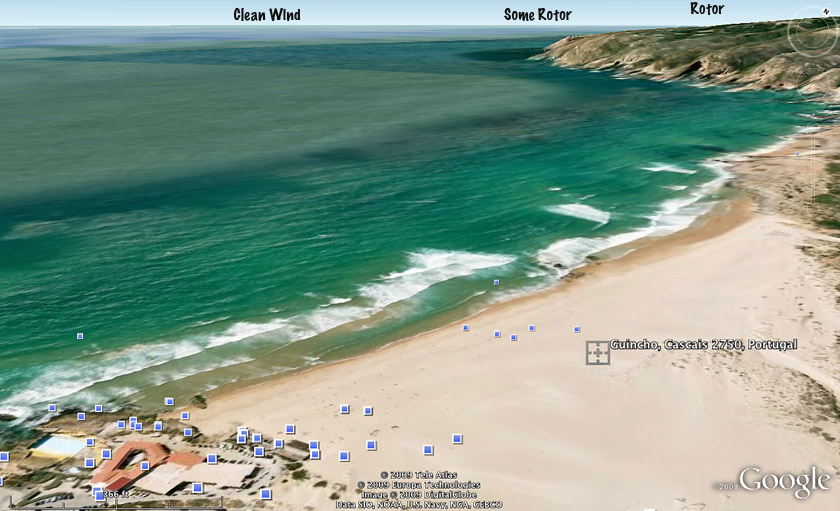 The photo is alinged more or less to the NW. If you have a honking strong, likely already gusty wind rotoring and refracting around this high point of land, you can expect some major gusts and lulls. I understand it is a popular spot with windsurfers. They can perhaps deal a bit easier with rotor, gliding through the lulls and sheeting out (or being catapulted!) in the gusts. Kiters either manage or they don't. Sounds like an experts spot with strong local experience when the wind is on and from the N-NW, then add waves! I imagine with strong winds, the "some rotor" zone can be pretty wide with shifting winds. 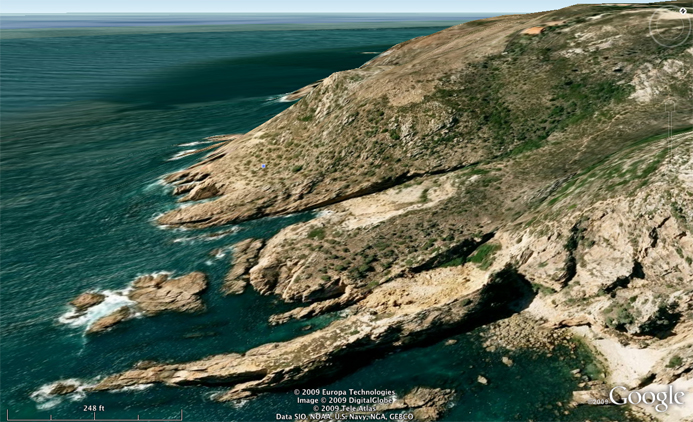 A closer look at Cabo de Rocha, that is a big chunk of rock! The thing with rotor like rapids over rocks, the faster the flow and higher the obstructions, the more violent and longer the area of turbulence. Some kiters may not know it but they are setting up in some Class 4 (aerial) rapids by analogy. We frequently say this accident or fatality happened due to excessively gusty wind. In some of these cases the excessively gusty wind has been caused or increased by rotor. Riders should routinely scope this out when evaluating the launch of the day. Who else has rotor at their spot, when, why and how do they deal with it? Any interesting stories come to mind?
__________________
FKA, Inc. transcribed by: Rick Iossi |
|
#3
|
||||
|
||||
|
Here's another example of serious rotor from a couple of years back. Again, this is known as a windsurfing spot, kiters go elsewhere. Windsurfers may be able to manage excessive rotor a bit better. At least they may be able to glide through the lulls. In gusts hopefully suffer nothing worse than to get spun 20 ft. away from their rig across the water in a catapult.
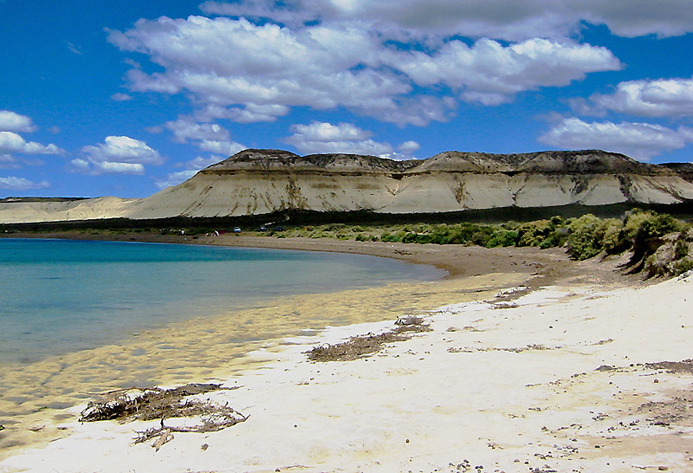 In strong winds, this embayment seems like it would turn into a blender of cascading wind. If you are standing there, the wind would die down to almost nothing for seconds, then boost up a bit, then perhaps rage down at high speed, then ebb or die and repeat. The direction of the wind might change as well, perhaps a lot. Look at the colored blobby diagram on the first page. I assume the colors represent various velocity ranges. Thing is where there is no color, there is no significant wind, dead lull shifting perhaps to honking strong in a red zone. The mess whirls all over the place continuously. 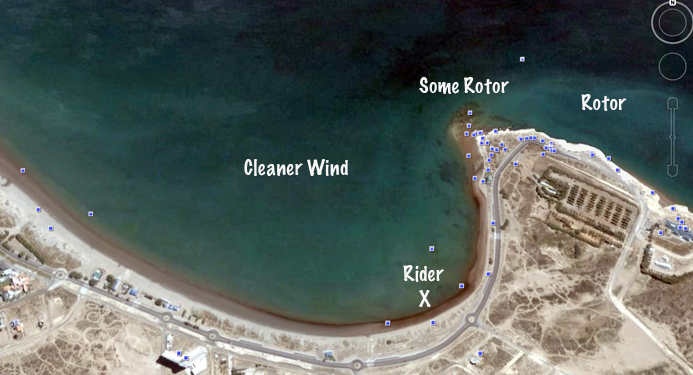 Pretty much anything east of north going clockwise up to around north west will be rotored in this bay. The rider was from out of the area, and apparently didn't fully appreciate hazardous conditions at this spot. Reportedly he was warned that this area wasn't a good choice for kiting by a local. He had been in around 12 kts. winds, kited upwind nearer to the rocks of the point. He was reportedly hit by a strong gust and lofted about 45 ft. high and fell into about 8 inches of water. He didn't survive the impact. Location is real important. Kiters should learn what to look for and avoid particularly if they are new to an area. Question, do some instructors teach this stuff along with other location selection considerations? I hope the days of focusing on the kiting setup, waterstarting and other basics alone are well in the past.
__________________
FKA, Inc. transcribed by: Rick Iossi |
|
#4
|
||||
|
||||
|
We had some north winds in SE Florida yesterday. Sometimes they will be bent side shore close to the beach or at times like yesterday, they will stay side offshore. This article goes into why offshore winds suck for kiting and usually aren't worth bothering with in nearshore areas. At best they can be a pain and at worse they can take you out. http://fksa.org/showthread.php?p=38932#post38932
__________________
FKA, Inc. transcribed by: Rick Iossi |
 |
|
|